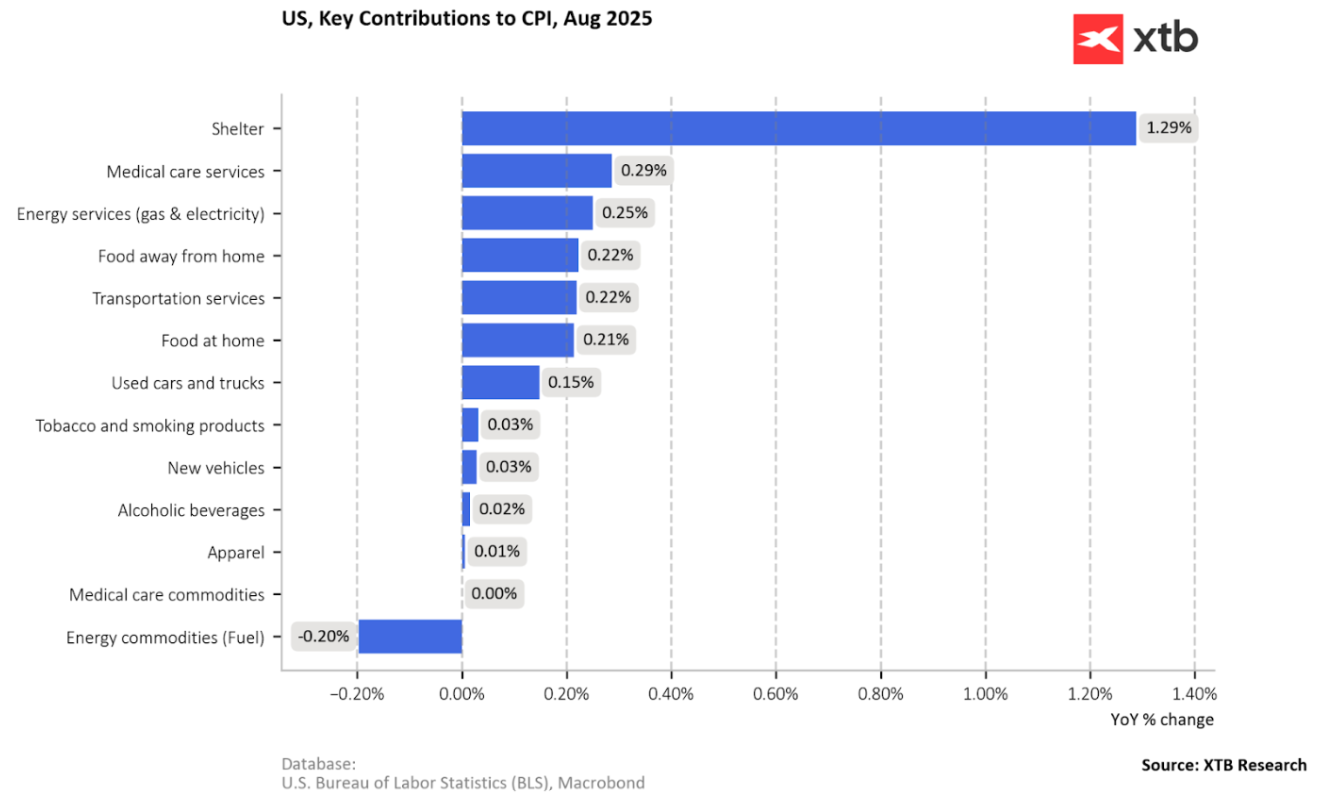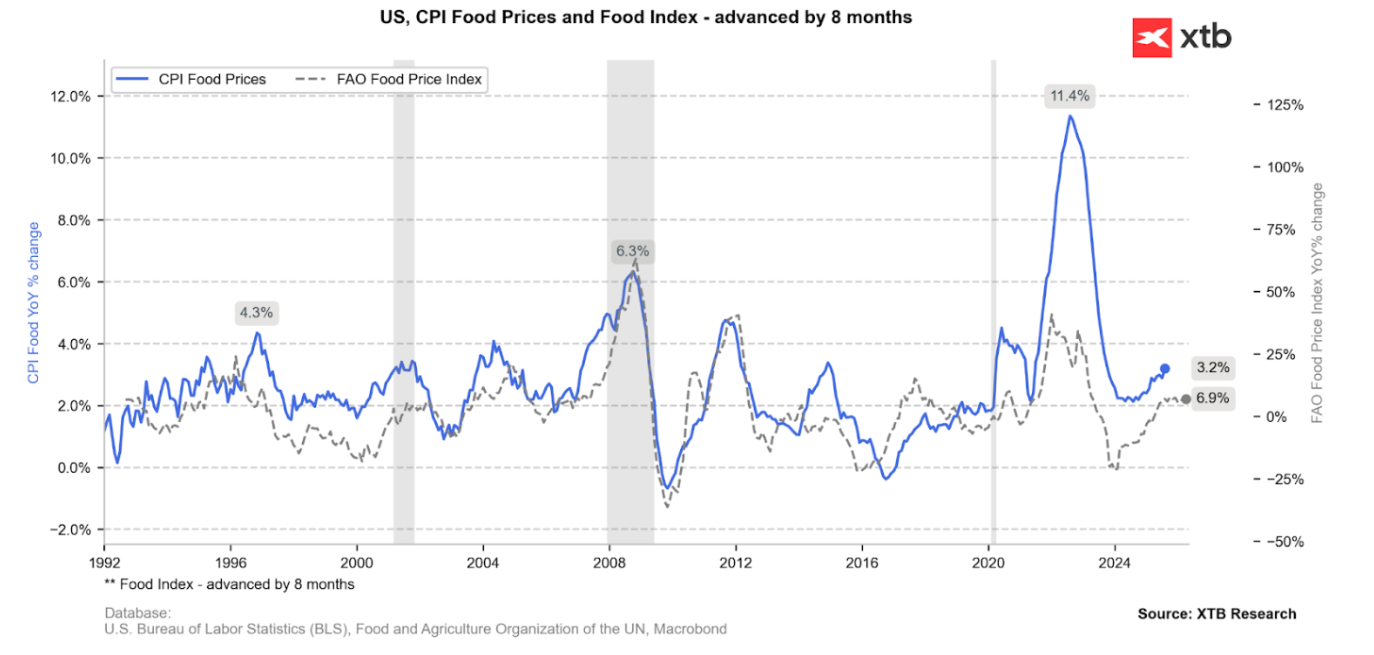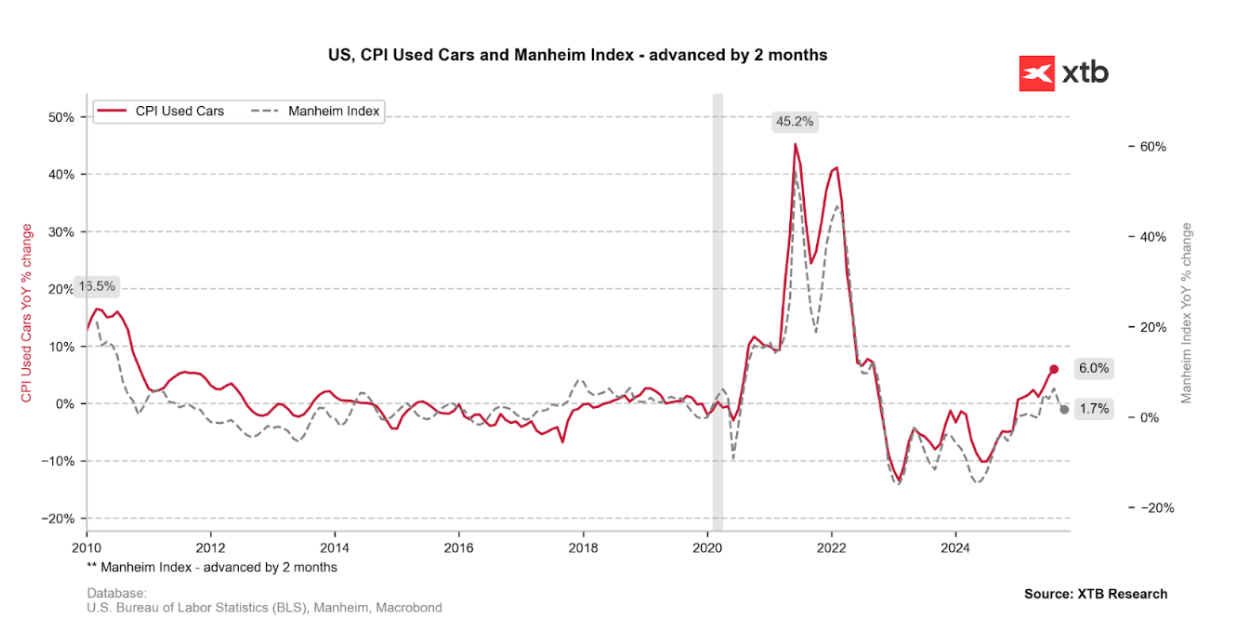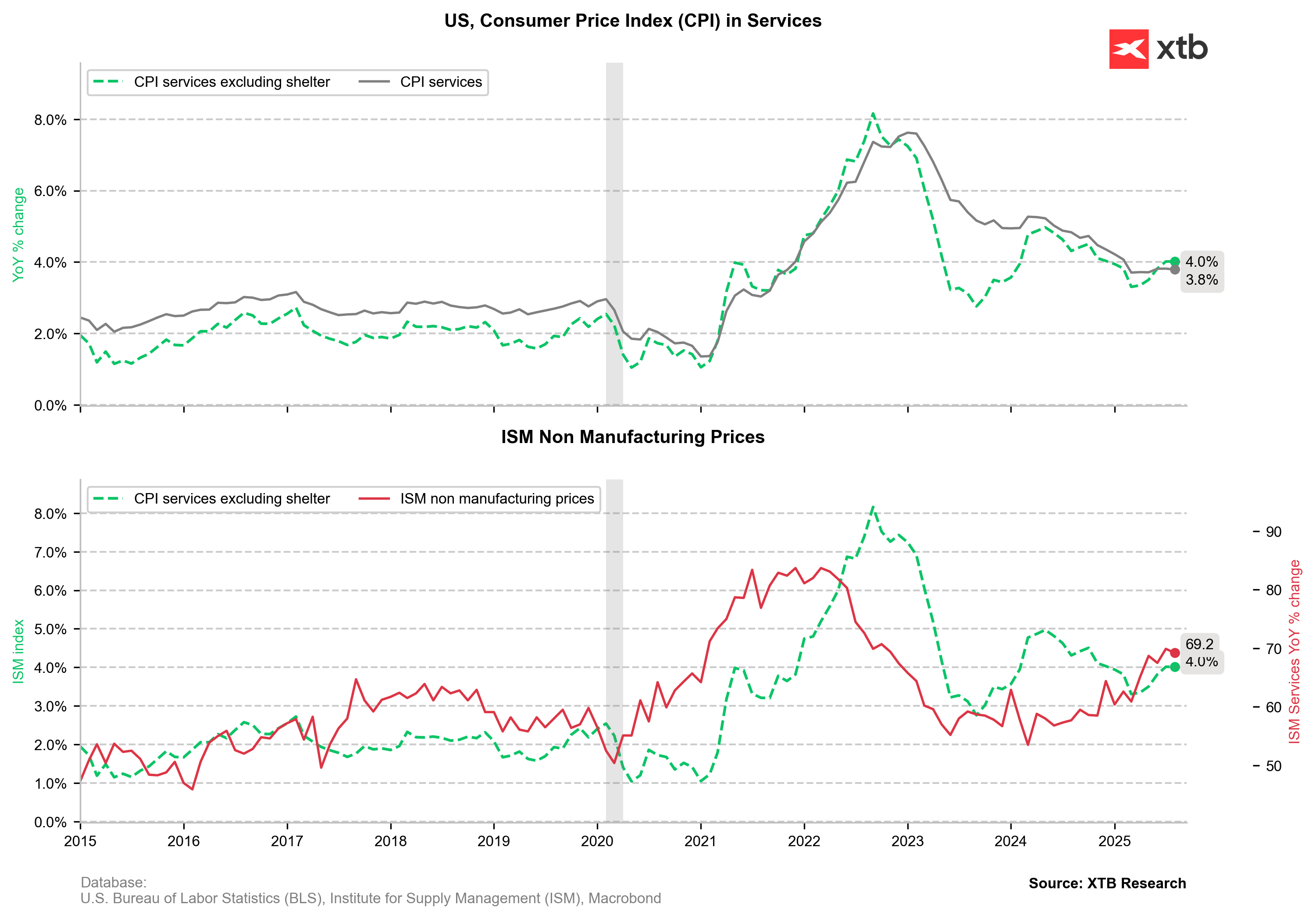Slightly higher inflation, strong rebound in claims
As expected, CPI inflation for August rose to 2.9% y/y from 2.7% y/y. Core inflation remained elevated at 3.1% y/y. The only surprise was a slightly higher monthly CPI, which rose 0.4% m/m versus expectations of 0.3% m/m. It is worth noting, however, that the m/m dynamic was twice as high as in July.
Core monthly inflation came in at 0.3% m/m, in line with expectations. On the other hand, we are seeing a very strong increase in jobless claims. This shows a growing divergence between the Fed’s mandates — labor market weakness and elevated inflation. What do the report details show and what could this mean for the Fed? And should Wall Street be worried?
Start investing today or test a free demo
Create account Try a demo Download mobile app Download mobile appMain drivers of inflation
- Housing (shelter) was the largest contributor to the monthly increase, rising 0.4%.
- Transportation services were the key driver of so-called SuperCore CPI (well above 3% y/y and just over 0.3% m/m); airline fares jumped 5.9%.
- Energy rose 0.7% m/m, with gasoline up 1.9%. Food prices increased 0.5% m/m.
- Cars have started to rise in price again. New vehicle prices rose +0.3%, used cars +1.0%, and auto repairs as much as 2.4%.
Tariffs vs. services impact
The key point is that the inflation increase came mainly from services, not from tariffs introduced by the Trump administration.
- Prices in import-exposed categories showed mixed signals, with no clear acceleration linked to tariffs.
- SuperCore CPI (services excluding shelter) slowed slightly to 3.52% y/y, suggesting price pressures are not as intense as they might appear. Still, far from the target.
These data confirm that the Fed is likely to begin easing monetary policy but will remain cautious in the pace of cuts due to persistent inflation well above the 2% target. Services remain sticky, and with any potential jump in gasoline prices, the picture would look much worse.
Key charts

CPI inflation rebounds as expected to 2.9% y/y. As leading indicators show, the biggest problem in the U.S. remains rising service prices. This is clearly illustrated by the price subindex of the ISM services survey. Source: Bloomberg Finance LP, XTB

Looking at the main components, rental inflation remains the largest contributor. However, contributions tied to rising service costs are growing steadily. The main driver of inflation is not tariffs but services. Medical, energy, transport, and food costs are rising strongly (with food partly impacted by tariffs). Source: Bloomberg Finance LP, XTB

Food prices in the U.S. are rising faster than suggested by the FAO food price index, partly linked to tariffs. Source: Bloomberg Finance LP, XTB

Used car inflation is rising — new cars are subject to tariffs. Nonetheless, the Manheim index suggests this dynamic should slow in the coming months. Source: Bloomberg Finance LP, XTB

Service inflation remains high, though stabilizing at elevated levels. Source: Bloomberg Finance LP, XTB
High inflation is a problem, but labor market weakness is an even bigger one
Initial jobless claims are rising to their highest levels in 4 years, though in 2023 and 2024 we saw levels above 250k. The biggest increase is linked to a strong rise in claims in Texas. While not yet a cause for panic, claims around 300k have usually been a recession signal.

A huge jump in initial jobless claims, with the level now the highest since 2021. Source: Bloomberg Finance LP, XTB

If this is not a one-off, the sharp rise in claims may suggest an uptick in the unemployment rate. Source: Bloomberg Finance LP, XTB
Fed will cut rates
It seems the Fed should not opt for a larger 50bp cut, given still-elevated inflation risks. However, it is clear that tariffs — the main source of price uncertainty — have had limited impact on U.S. prices. Therefore, the Fed will cut rates, but likely without pre-committing to a full cycle, remaining very data-dependent.
The material on this page does not constitute as financial advice and does not take into account your level of understanding, investment objectives, financial situation or any other particular needs.
All the information provided, including opinions, market research, mathematical results and technical analyses published on the website or transmitted to you by other means is provided for information purposes only and should in no event be interpreted as an offer of, or solicitation for, a transaction in any financial instrument, nor should the information provided be construed as advice of legal or fiscal nature.
Any investment decisions you make shall be based exclusively on your level of understanding, investment objectives, financial situation or any other particular needs. Any decision to act on information published on the website or transmitted to you by other means is entirely at your own risk. You are solely responsible for such decisions.
If you are in doubt or are not sure that you understand a particular product, instrument, service, or transaction, you should seek professional or legal advice before trading.
Investing in OTC Derivatives carries a high degree of risk, as they are leveraged based products and often small movements in the market could lead to much larger movements in the value of your investment and this could work against you or for you. Please ensure that you fully understand the risks involved, taking into account your investments objectives and level of experience, before trading, and if necessary, seek independent advice.

